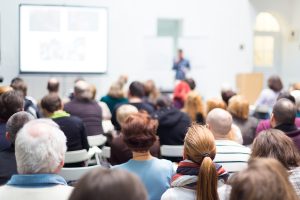 What if you were in a coma for six years and woke up to the social media apocalypse of 2016? Ask blogger Hossein Derakhshan. He was jailed from 2008 to 2014 in Tehran for his online activism about Iran. In his November article for MIT Technology review, he writes:
What if you were in a coma for six years and woke up to the social media apocalypse of 2016? Ask blogger Hossein Derakhshan. He was jailed from 2008 to 2014 in Tehran for his online activism about Iran. In his November article for MIT Technology review, he writes:
“when I left prison and came back online, I was confronted by a brave new world. Facebook and Twitter had replaced blogging and had made the Internet like TV: centralized and image-centered, with content embedded in pictures, without links.
Like TV it now increasingly entertains us, and even more so than television it amplifies our existing beliefs and habits. It makes us feel more than think, and it comforts more than challenges. The result is a deeply fragmented society, driven by emotions, and radicalized by lack of contact and challenge from outside.”
He notes that the Oxford Dictionary has designated “post-truth” as the word of 2016: an adjective “relating to circumstances in which objective facts are less influential in shaping public opinion than emotional appeals.”
For those of us working in the conflict resolution and public participation fields, this has serious ramifications. The communities we serve are overwhelmed with information, but have less common knowledge than ever before. People are drawn to compelling, often visual imagery and have little time for the important details. People can design their news feeds to fit their narrower and narrower viewpoints, not just their interests. Worse, these selections are being done for them, in part by choice and in part by algorithm; but in both cases this constant reinforcement helps to make all of us more certain that we are right in our own beliefs and opinions.
One of the most important functions of public participation, whether it be public communication, a citizen’s advisory board, or a town hall meeting, is to create environments for people to hear each other’s points of views and reflect on the broad range of interests and values that must be balanced to make robust societal decisions. Is the very technology that promised to bring us all together, actually working against us? Well, yes and no. While individuals may get stuck in their own bubbles, communities, as a whole, are defining and communicating their beliefs more powerfully and transparently than ever.
As public participation professionals, this profusion of public expression does not diminish our collective role, but if we are smart, we will recognize that it certainly has changed our role. We can’t fight social media (we have already lost that battle), we can’t ignore it (it is here to stay), and we can’t use it to do our fundamental work (it is just not designed for it). However, we can and must use social media to inform our work in a fundamental way. It helps us to define the range of viewpoints, the degree of passion, and the likely conflicts that public discourse needs to encompass.
In many ways, the job of public participation is more essential than ever, but it has shifted. 25 years ago, we had to do a lot of work to simply identify key stakeholders and give them a platform to be heard. Today, virtually everyone has that platform. If you don’t know what different stakeholders are thinking, then you are not paying attention. However, public participation in this next generation must fill in the critical missing pieces and focus on connecting stakeholders together, creating environments for them to listen to and understand each other, helping them to engage in real dialogue, and finding common solutions to our toughest problems. We don’t need more public hearings where people shout in person what they are already shouting online. We need communities to remember what it means to relate to each other and address issues together.
Doug Sarno
You can read Hossein Derakhshan’s full article here:
